The Best New Sunscreens of 2024, According to Dermatologists and Editors
Dozens of new sunscreens are hitting shelves this summer—but these formulas stand out from the crowd.


Sunscreen is perhaps the single most important product in any skincare routine. It protects you from the sun's UVA rays (the ones that speed up skin damage) and UVB rays (the ones that give you sunburn and can lead to cancer).
Luckily, finding a tube of sunscreen is easy. There have been more than 50 prominent new sunscreen releases in the past five months alone. But finding an SPF you enjoy enough that you actually wear it—that's a harder task, especially when it comes to your face. It needs to layer well under makeup, be gentle enough to not cause breakouts, and feel silky on the skin. Nobody likes a goopy or greasy texture or a lotion that leaves a white tint.
To help you sort through the options, the Marie Claire team diligently tested the latest launches. Every facial sunscreen on this list offers a minimum of SPF 30 protection and is approved by dermatologists. They've been in our routines for well over a month—and are a welcome addition. We wore the products under foundation, tried them on different skin types and tones, and ensured they come from brands that get the Marie Claire stamp of approval.
The result: A small selection of sunscreens that set a new standard in what we consider good. They've been formulated with skin-friendly ingredients that boost hydration and decrease hyperpigmentation. Some double as makeup primers or hail from innovative Korean beauty brands. Others offer tinted coverage for a summer glow, are specifically formulated to mattify oily skin, or make reapplication an easy experience. And they all protect you from the sun.
You can shop the best 2024 facial sunscreens below, as well as get all the information you need to know about SPF from Adam Friedman, M.D., chair of dermatology at George Washington University; Joyce Park, M.D., board-certified dermatologist and founder of Skin Refinery; and Dhaval Bhanusali, M.D., founder of Hudson Dermatology Laser and Surgery.
The Best 2024 Sunscreens
- The Best 2024 Sunscreen Overall: Murad Multi-Vitamin Clear Coat SPF 50 Sunscreen
- The Best 2024 Sunscreen for Dry Skin: Glow Recipe Watermelon Glow Niacinamide Dew Balm Sunscreen Stick
- The Best 2024 Mineral Sunscreen: Mary Kay Mineral Facial Sunscreen Broad Spectrum SPF 30
- The Best 2024 Hydrating Sunscreen: Andalou Naturals Daily Shade + Blue Light Defense Facial Lotion
- The Best 2024 Oil-Free Sunscreen: It Cosmetics Hello Sunshine Invisible Sunscreen For Face SPF 50
- The Best 2024 Sweat-Resistant Sunscreen: Shiseido Ultimate Sun Protector Face and Body Lotion SPF 60+ Sunscreen
- The Best 2024 Sunscreen for Deeper Skin Tones: Eltamd Uv Clear Broad-Spectrum Spf 46 - Tinted

I’ll be spending plenty of time in the pool this summer, so a water-resistant SPF is necessary to protect my skin. Enter: Murad’s Multi-Vitamin Clear Coat, which lasts for 40 minutes in the water. But even if you're not a swimmer, this formula works wonders. I’m a huge fan of the velvet finish for sweaty summer days because it keeps my complexion looking glowy as opposed to a greasy mess. And the clear formula reminds me of a mattifying makeup primer, so I really like to load up on my T-Zone.
SPF: 50 Color: Clear Type: Chemical
Pros: Completely clear finish; demi matte and works well under makeup; water-resistant; contains antioxidants
Cons: Not hydrating enough for dry skin

Beauty Editor Samantha Holender (hi, me!) wears Murad's Multi-Vitamin Clear Coat as a makeup primer.
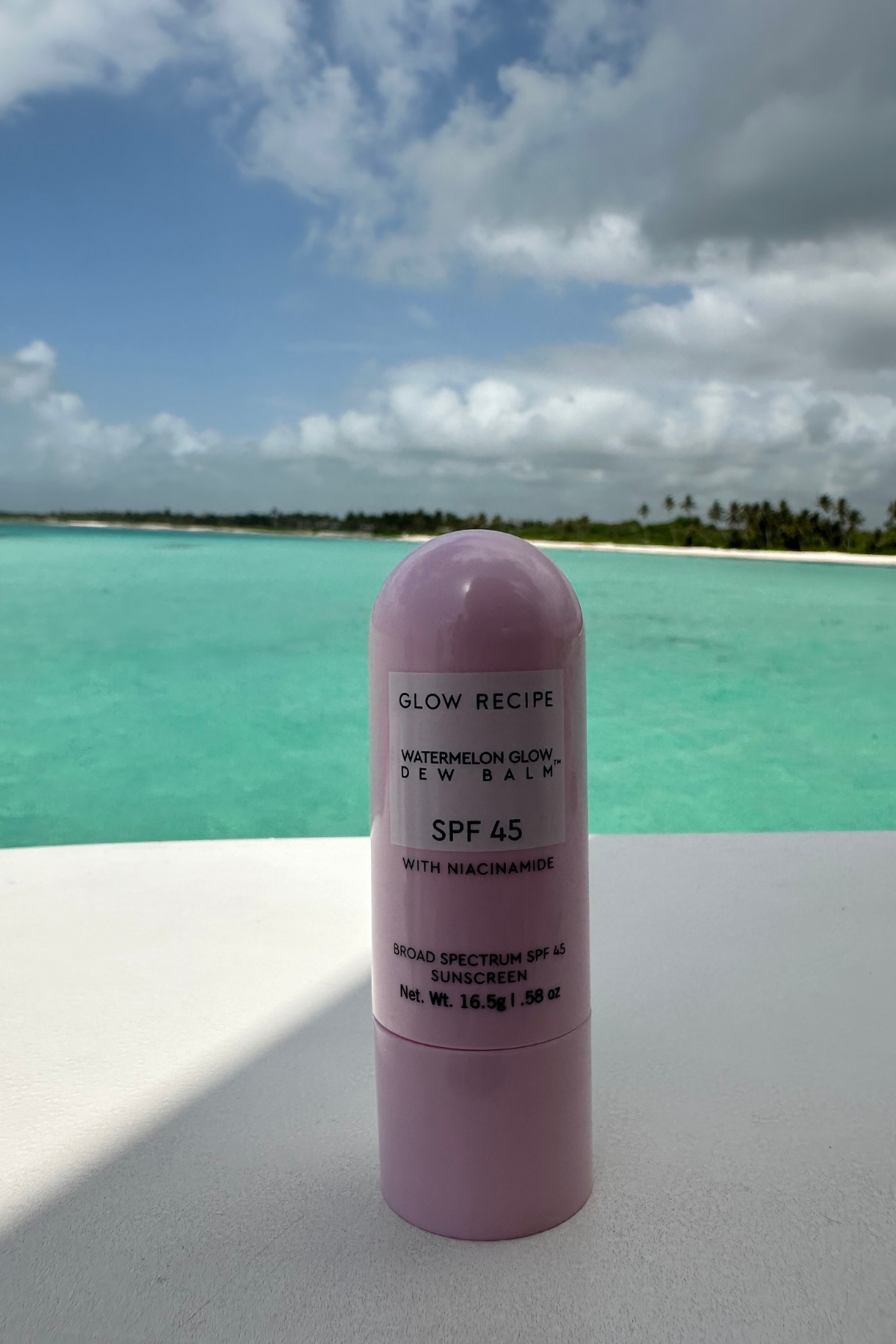
Let’s start out with a caveat: This SPF is not sufficient on its own—you will not apply enough to get the SPF 45 benefit. That said, I love this as a sunscreen topper—and so does Marie Claire’s associate e-commerce editor Brooke Knappenberger. “The glow it leaves is next-level pretty and the stick formula makes it a breeze to reapply,” she says. It’s deeply hydrating and will 100 percent leave you with a gorgeous shine on the beach.
Let's start with a caveat: This SPF is designed to be a shine-boosting topper; you should still layer a full teaspoon-worth of sunscreen underneath. Marie Claire’s associate e-commerce editor Brooke Knappenberger loves using this to keep her skin from getting dry on hot beach days. “The glow it leaves is next-level pretty,” she says. “And the stick formula makes it a breeze to reapply."
SPF: 45 Color: Clear Type: Chemical
Pros: Contains hydrating hyaluronic acid; dewy finish; doubles as makeup; feels soothing on the skin
Cons: You won’t get enough coverage with this product alone, so you'll need to double up on sunscreen
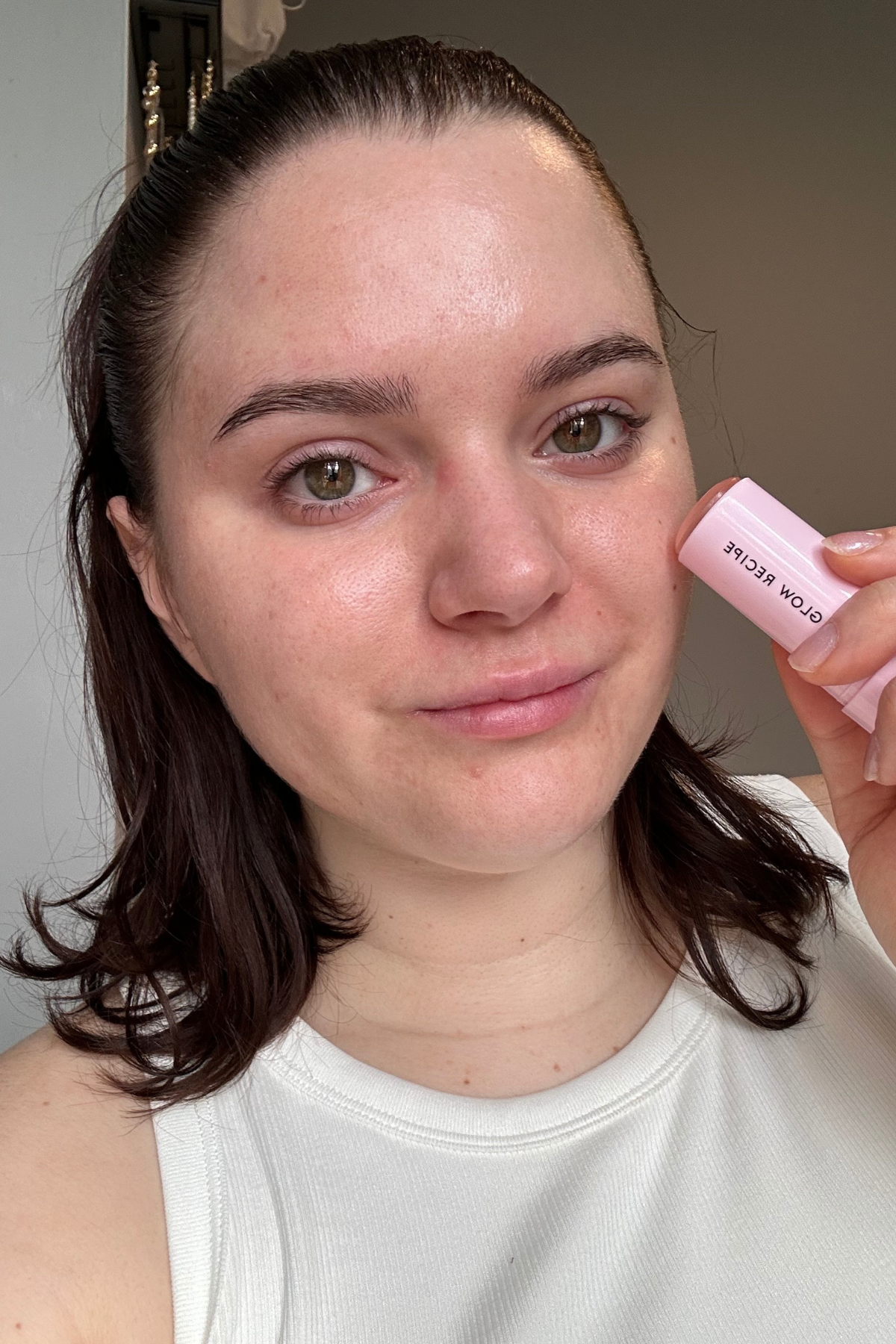
MC's associate e-commerce editor Brooke Knappenberger loves Glow Recipe's new SPF for its glowy finish.

Finding a sunscreen that doesn’t flare acne can be challenging. For starters, you’ll want an oil-free, non-comedogenic formula—just like this one. “Mary Kay’s new SPF is winning me over," says Lucia Tonelli, Marie Claire’s associate director of social media. "The product is lightweight, buttery, and doesn’t clog your pores—a rarity with SPF, especially mineral formulas! While there’s a white cast immediately after application, it fades almost instantly. Because of how smoothly it applies, I don’t need to apply primer before putting on makeup.”
SPF: 30 Color: White Type: Mineral
Pros: Good for acne-prone skin; non-comedogenic
Cons: Getting rid of the white tint requires some rubbing

MC's associate director of social media Lucia Tonelli has made Mary Kay's new SPF her go-to thanks to its acne-friendly formula.

Andalou is my latest go-to not only when I’m looking for vegan formulations (no beeswax or any animal byproducts), but also when I want a product that is as hydrating as it says it is. I passed on my new favorite to Halie LeSavage, Marie Claire’s fashion and beauty senior news editor—and her review echoes my sentiment. “Not to be dramatic, but Andalou's Daily Shade+ sunscreen is unlike any I've ever tried. When the bottle says deep hydration, it means the formula has a plumping, softening effect,” she says. “It comes out of the bottle fluffy (and with the slightest medical scent); it dries and absorbs into my skin within a minute of application, and is perfect for layering under my concealer in the morning.”
SPF: 30 Color: White Type: Mineral
Pros: Contains hyaluronic acid and bio-designed collagen to plump and hydrate skin; vegan formula; plumping effect
Cons: Takes a while to rub in before it becomes invisible

Halie LeSavage, MC's senior news editor gives Andalou's SPF her stamp of approval thanks to its moisturizing texture.

Heavy, thick skincare in the summer? No, thanks. That’s why the scientists at It Cosmetics decided to create an SPF ideal for the most humid season. “There is no oiliness and no white cast, just effective protection and hydration,” says Ashlyn Delaney, Marie Claire’s associate social media editor, who has combination skin. “With one percent pro-vitamin B5 and hyaluronic acid, the formula effortlessly glides onto my skin without clogging pores. And I must mention, it smells amazing. It's so good that I now keep it on my desk as my go-to sunscreen.”
SPF: 50 Color: White Type: Chemical
Pros: No white tint; antioxidant-boosted formula; oil-free
Cons: Has a strong scent that’s not ideal for sensitive skin

MC's associate social media editor Ashlyn Delaney is a big fan of It Cosmetics SPF because it doesn't clog her pores.

With summer here, it's nice to have a sunscreen in your rotation that will see you through dips in the ocean, outdoor workouts, and general sweaty days. It's why Marie Claire's beauty writer Gabrielle Ulubay, keeps Shiseido’s newest launch (which is endorsed by Olympic athletes!) by her side. “Shiseido is the first brand to convert me to facial sunscreen, with its thin formulas that sink into skin fast and never make me feel greasy,” she says. “This newest iteration boasts 80 minutes of water- and sweat-resistance and a higher degree of SPF. It also protects against both UVA ray, UVB rays, and pollution, so I can leave the house feeling confident that my sunscreen is guarding both my skin and my long-term health.”
SPF: 60 Color: White Type: Chemical
Pros: High SPF; sweat-resistant; environmental protection; good for face and body
Cons: Pills with too many layers

MC's beauty writer Gabrielle Ulubay is into Shiseido's non-greasy texture.

Elta MD UV Clear is a beauty editor and dermatologist favorite—and the brand’s newest launch is just as impressive. Just take Dr. Bhanusali’s word for it: “It’s great; it is antioxidant-rich and also safe for post-procedure in our offices.” The SPF is my constant recommendation for people who hate sunscreen—once it's rubbed in, you won't feel like you're wearing anything at all. The Daily Deep Tint is ideal for darker skin tones too, as the brand worked diligently to create a sunscreen that would go on invisible.
SPF: 40 Color: Tinted Type: Chemical
Pros: No white cast; no pilling; rich in antioxidants
Cons: Can feel thick with multiple layers
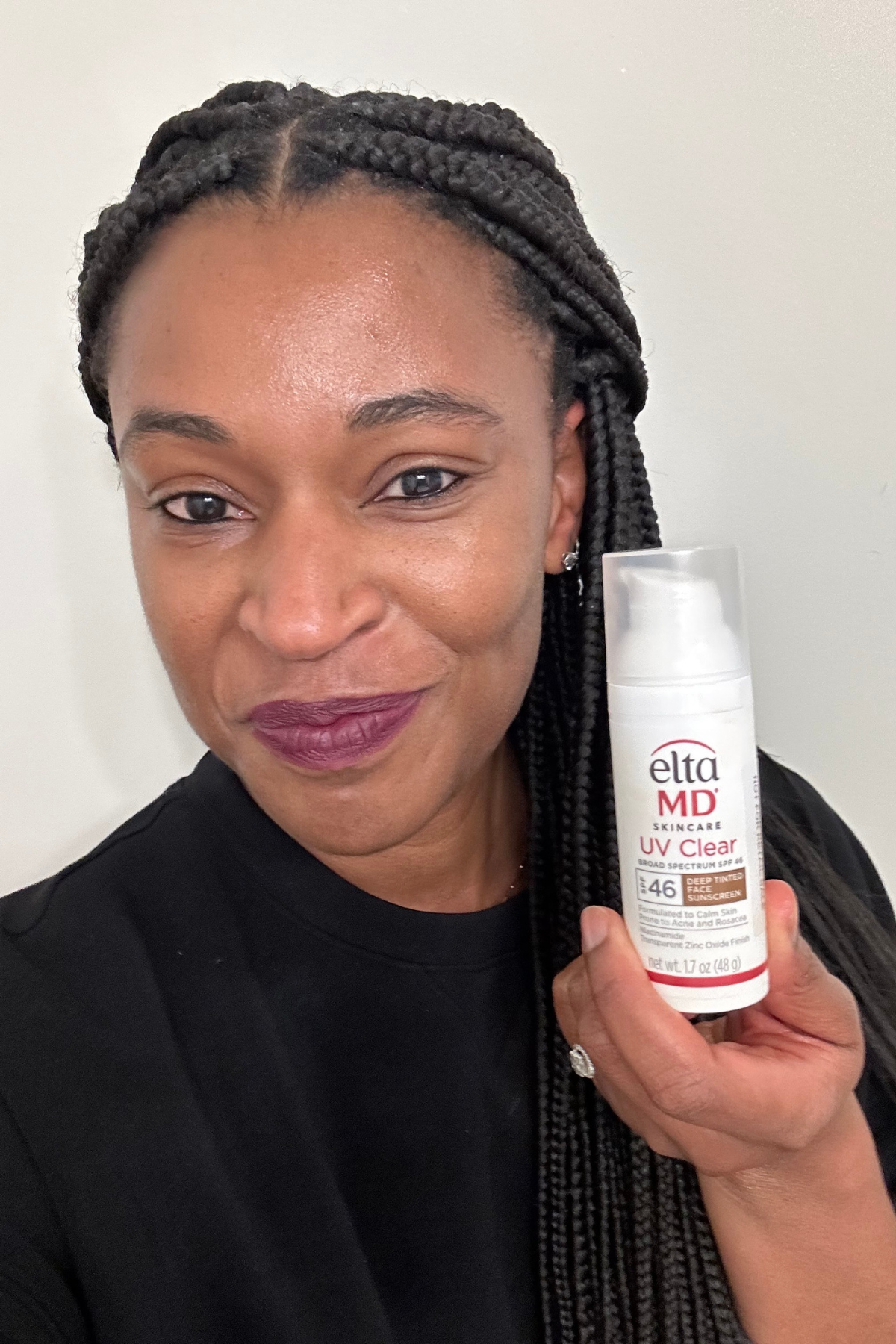
MC's beauty director Deena Campbell wears the new Elta MD UV Clear SPF 46 in shade Deep Dark.
Also Recommended

I’ve had a constant rotation of sunscreens come across my desk this year, but the newest addition to Revision’s Itellishade collection is hard to beat. I was shocked to learn that this formula was powered by physical actives—zinc and titanium dioxide—simply because there is no white tint (yellow iron oxide counteracts the pastiness), and it feels simultaneously lightweight and silky. I actually look forward to applying this daily, both for the SPF 50 protection and the added skincare benefits. Thanks to the inclusion of vitamin C, I’ve noticed brightening effects and improved my overall skin tone.
SPF: 50 Color: White Type: Mineral
Pros: No white cast; hydrating enough to be a moisturizer on oily skin
Cons: Takes a second to rub in

La Roche-Posay is, without a doubt, my go-to for drugstore sunscreens. Their formulas are efficacious and offer an option for every skin type and concern. While I’m normally a Moisture Milk SPF 100 die-hard (it’s great for my sensitive skin), the new Mela B3 SPF is certainly impressive. The SPF 30 rubs in with ease, doesn't leave a white cast, and has the added benefit of correcting dark spots. I've noticed that hyperperpigmation left over from acne fade so much faster when I'm using this sunscreen religiously.
SPF: 30 Color: White Type: Chemical
Pros: Non-greasy texture; silky feeling
Cons: It can pill
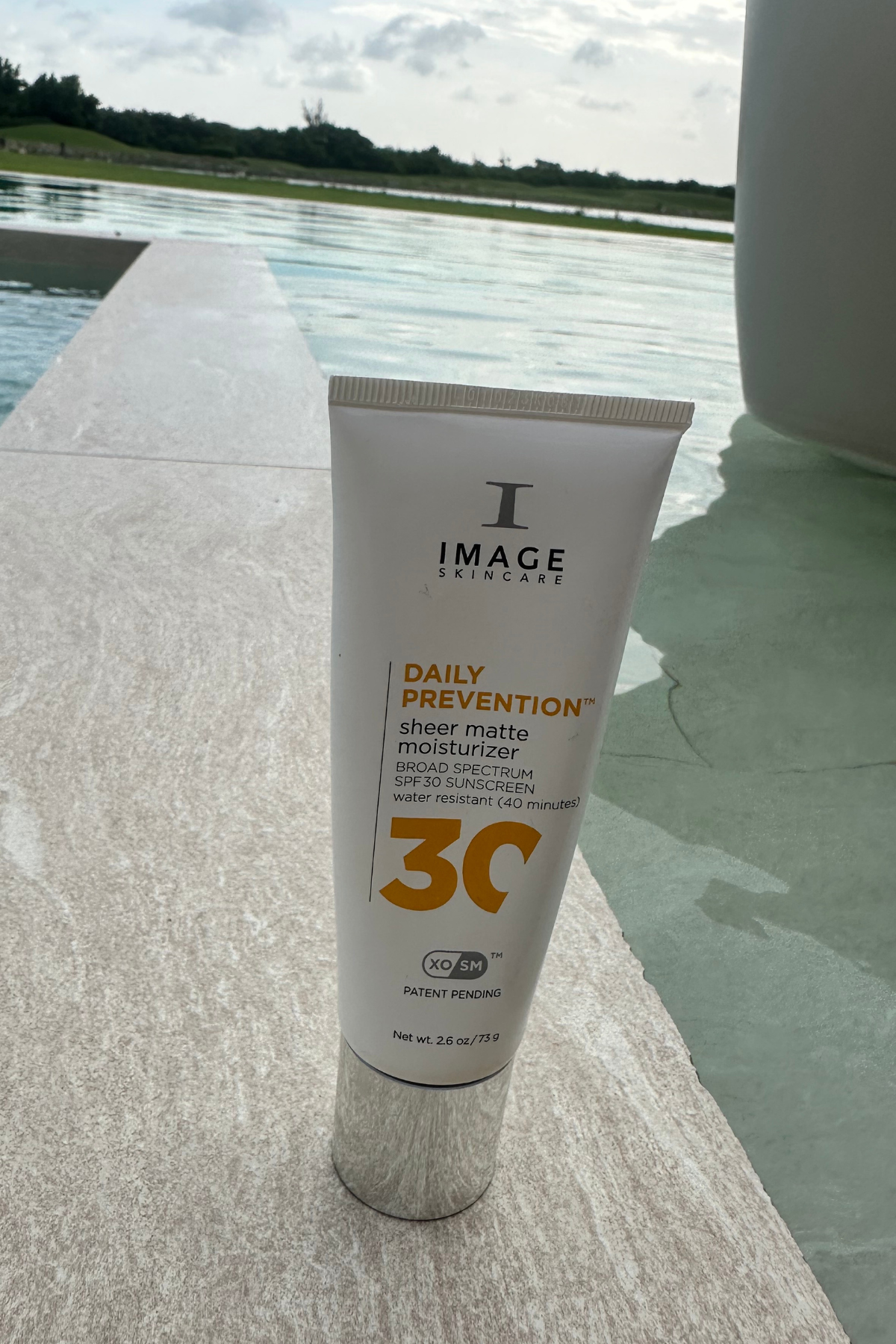
My first thought after applying this sunscreen: I don’t need to use primer. With a mattifying, foundation-gripping finish, Image’s latest drop is the definition of a workhorse, providing broad-spectrum protection and a base for makeup in one fell swoop. The clear formula has a gel-like feel, which makes it easy to apply without suffocating my skin. While not marketed as having blurring properties, I swear the pores on my nose are invisible after application.
SPF: 30 Color: Clear Type: Chemical
Pros: Blurs pores; doubles as a mattifying primer to absorb oil; good for dark skin tones
Cons: Has a citrus fragrance that might irritate sensitive skin

I'll be honest: At first, I didn't think I was going to like Vacation's Shake Shake SPF. The product's admittedly adorable packaging dispenses a watery mineral formula that I assumed would feel runny and sticky. My theory was quickly debunked. This SPF actually dries down into a velvet-like texture. Thanks to a slew of hydrating and soothing ingredients, it also makes my redness disappear and calms any irritation.
SPF: 50 Color: White Type: Mineral
Pros: Cute packaging; no white cast; packaging made with recyclable materials
Cons: Watery texture can make it hard to apply enough product

Vegan, reef-safe, and boosted with skin-brightening vitamin C, Mara’s new SPF-meets-serum has quickly become a staple in my skincare routine. As a sensitive skin girl, I can confirm this incredibly thin SPF is a savior for skin sensitivity and redness. I’ve already noticed that my red cheeks are calmer on the daily. Its texture feels a bit like a face oil, which is why I like to layer it on top of a thicker sunscreen for an added boost of glow on days when I'm not wearing foundation.
SPF: 30 Color: Yellow to clear Type: Mineral
Pros: Provides a glow; neutralizes redness; good for sunburns
Cons: The serum is not thick enough to provide adequate coverage on its own

If you’re a tinted sunscreen skeptic, let Ulubay convince you to give Peter Thomas Roth’s latest innovation a chance: “Tinted formulas never match my skin tone, no matter their promises to adapt to it," she says. "That’s why this sunscreen was a delightful surprise. It blends to my skin tone perfectly, holding up under even the harshest lighting, and it has a lightweight feel and matte finish that's perfect for people with oily or combination skin. It also blurs unevenness and minor skin flaws, giving me a naturally photo-ready finish.”
SPF: 45 Color: Tinted Type: Chemical
Pros: Blurring effect; flattering tint; good for combination skin
Cons: Feels a little thick

Multi-tasking products are summer staples—and Biossance’s new sunscreen is an SPF and makeup primer in one. Just a word of warning: Don’t judge it right off the bat. "Not going to lie, I was skeptical about this sunscreen when I first applied it because it was very white," Knappenberger says. "But lo and behold, after about 20 seconds of rubbing it in, I was left with a sheer finish. My skin also felt plump and moisturized and the slickly tacky texture made my makeup stick so well.”
SPF: 30 Color: White Type: Mineral
Pros: Plumping; hydrating; great under makeup
Cons: Can leave a bit of a white cast on deeper skin tones

Tatcha’s cult-favorite Silk Sunscreen isn’t new per se, but it did get a cosmetic makeover this year, which puts it firmly on our list. “The Tatcha silk screen is so lightweight and layers easily under makeup with a soft radiant finish,” says Dr. Park, naming this her favorite launch in 2024. She also shouts out the SPF’s inclusion of skincare-first ingredients, which boost hydration and even out skin tone. I genuinely enjoy rubbing this into my skin because it softens any dry and rough patches instantly; I can feel the moisture being returned to my skin. Plus, I can apply as many layers of this SPF as I want without having to deal with pilling.
SPF: 50 Color: White Type: Mineral
Pros: No white cast; radiant finish; hydrating; sweat-resistant
Cons: A bit of a natural fragrance
Do I Need Sunscreen?
“Sunscreens are our best defense against harmful UV rays from the sun,” Dr. Bhanusali says. Unprotected exposure is the number one cause of skin cancer, which is said to affect one in five Americans in their lifetime. With that in mind, sunscreen needs to be a staple in every skincare routine.
“And aside from protecting us against skin cancers, they can also help us fight against hyperpigmentation and age-related collagen breakdown,” Dr. Bhanusali adds.
What to Look for in a Sunscreen
- Finish
Choosing the best sunscreen is a highly personal decision. Cosmetically, you can choose from matte finishes (great for oily skin) or glowy finishes (ideal for dry skin).
- Chemical versus Mineral
The main choice when choosing a sunscreen is whether you want a mineral sunscreen with active ingredients like zinc or titanium dioxide, or a chemical sunscreen, which can use a handful of active ingredients like oxybenzone or octinoxate.
There are pros and cons to both: Mineral sunscreens, while more tolerable on sensitive skin and viewed more fondly by the FDA, are more inclined to leave a white cast or feel heavy. Chemical sunscreens, on the other hand, typically have silkier, clearer finishes, but there are some studies questioning the health effects of chemical sunscreen entering the bloodstream.
Ultimately, the best sunscreen is the one you wear, Dr. Friedman says, as the most important thing is that you use some form of sun protection.
- SPF Level
SPF determines how well the product will protect you from sunburn. When deciding between an SPF 15 (the lowest possible level of protection as mandated by the FDA) or an SPF 100, the higher the number, the better. “In an ideal world, you don’t need anything higher than SPF 30,” says Dr. Friedman, noting that SPF 30 is the American Academy of Dermatology’s recommendation. “But most people put on a quarter to a half of what you actually need. There’s a dilutional effect, so using a higher SPF, even if it’s not the right amount, can help keep you in the protection zone.”
How Much Sunscreen You Need to Apply
You need a lot—way more than you think. “You should be using about 2mg of sunscreen per cm of skin,” says Dr. Bhanusali. “That translates to about two tablespoons—a shot glass or so—for the face and body.” You can also coat two whole fingers, from base to tip, if you’re looking for an easy way to gauge how much SPF you need on your face.
How Frequently You Need to Apply Sunscreen
SPF protection doesn’t last all day—as a rule of thumb, you want to reapply your sunscreen every two hours in order to keep the benefits. “Reapplication is really crucial, especially if you're swimming, sweating, or towel-drying, as these activities can wear off sunscreen faster than normal,” Dr. Park says. If you don’t want to put a cream product over your makeup, consider throwing a sunscreen spray or powder sunscreen in your bag. Consider the sun, blocked.
This story is part of our So, Let's Talk About Sunscreen package, our guide to what you need to know to stay safe in the sun. You can read more here.
Meet the Dermatologists

Adam Friedman, MD, FAAD is Professor and Chair of Dermatology and serves as Residency Program Director, Director of Translational Research, and Director of the Supportive Oncodermatology Program in the Department of Dermatology at The George Washington University School of Medicine & Health Sciences. Dr. Friedman completed his undergraduate training at the University of Pennsylvania and graduated with Distinction in Dermatologic Research at the Albert Einstein College of Medicine in New York.
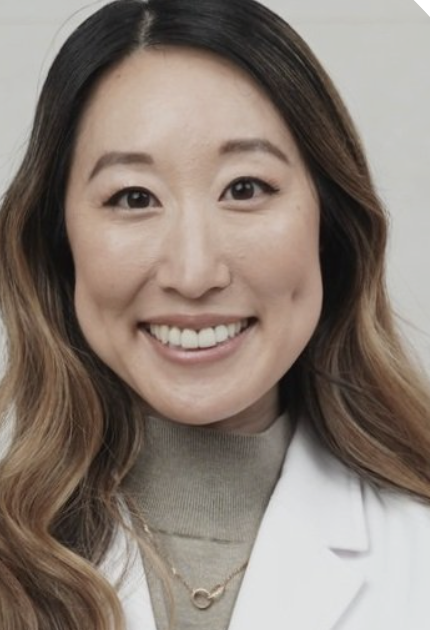
Dr. Joyce Park is a board-certified dermatologist based in Washington, founder of Skin Refinery, a virtual dermatology clinic, and a skincare and beauty content creator at Tea with MD. She attended college and medical school at Stanford University, and completed her dermatology residency at NYU.

After being accepted into medical school at 17, Dr. Bhanusali completed his studies at the Michigan State University Medical Scholars Program where he was also awarded the Spartan Scholarship and Arthur L Foley Memorial Scholarship. He completed his Dermatology residency at Mount Sinai Hospital in NYC.
Get exclusive access to fashion and beauty trends, hot-off-the-press celebrity news, and more.

Samantha Holender is the Senior Beauty Editor at Marie Claire, where she reports on the best new launches, dives into the science behind skincare, and shares the breakdown on the latest and greatest trends in the beauty space. She's studied up on every ingredient you'll find on INCI list and is constantly in search of the world's glowiest makeup products. She's constantly tracking the biggest nail and hair trends to pop up in the beauty space, going backstage during fashion weeks, tracking celebrity looks, and constantly talking to celebrity hair stylists, nail artists, and makeup artists. Prior to joining the team, she worked as Us Weekly’s Beauty and Style Editor, where she stayed on the pulse of pop culture and broke down celebrity beauty routines, hair transformations, and red carpet looks. Her words have also appeared on Popsugar, Makeup.com, Skincare.com, Delish.com, and Philadelphia Wedding. Samantha also serves as a board member for the American Society of Magazine Editors (ASME). She first joined the organization in 2018, when she worked as an editorial intern at Food Network Magazine and Pioneer Woman Magazine. Samantha has a degree in Journalism and Mass Communications from The George Washington University’s School of Media and Public Affairs. While at GWU, she was a founding member of the school’s HerCampus chapter and served as its President for four years. When she’s not deep in the beauty closet or swatching eyeshadows, you can find her obsessing over Real Housewives and all things Bravo. Keep up with her on Instagram @samholender.